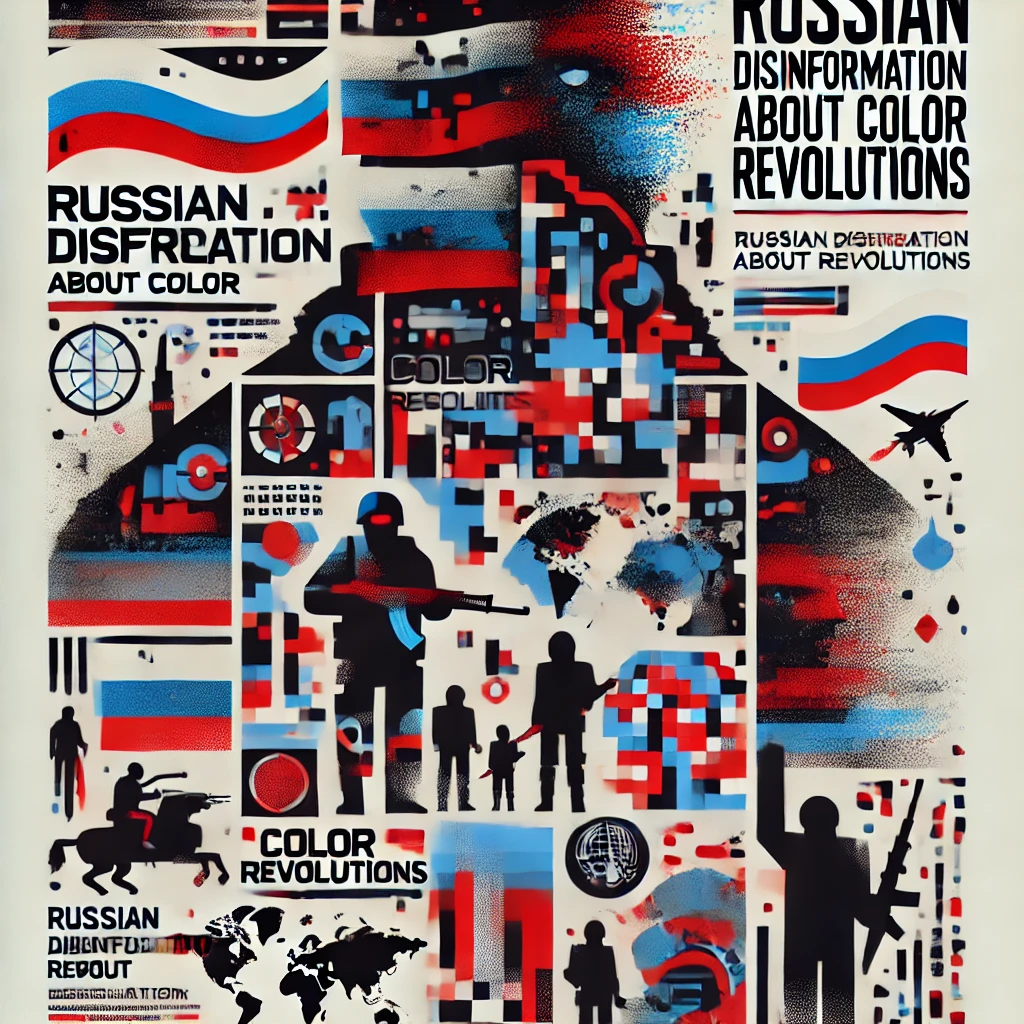In recent years, Russia has been actively spreading disinformation about so-called “color revolutions,” portraying them as Western-orchestrated schemes to undermine governments allied with Moscow. These narratives are not only a tool for delegitimizing democratic movements but also a means of justifying Russia’s internal and external policies. By framing these movements as foreign conspiracies, the Kremlin manipulates public opinion to maintain its sphere of influence and suppress dissent both at home and abroad.
What Are Color Revolutions?
The term “color revolution” refers to a wave of peaceful, nonviolent uprisings that began in the early 2000s, challenging authoritarian regimes in post-Soviet states. Prominent examples include:
- The Rose Revolution (2003) in Georgia
- The Orange Revolution (2004) in Ukraine
- The Tulip Revolution (2005) in Kyrgyzstan
These revolutions were driven by widespread dissatisfaction with corruption, lack of democracy, and political repression. They often involved large-scale protests and led to significant political changes, including the replacement of entrenched regimes. While these movements were homegrown, Russia has consistently painted them as Western-engineered coups designed to destabilize pro-Russian governments.
How Russia Constructs Its Disinformation Campaigns
Russia’s portrayal of color revolutions as Western conspiracies is a deliberate effort to erode trust in democratic processes and delegitimize movements for change. The Kremlin uses a multi-faceted approach to propagate its narratives:
- State-Controlled Media
Russian state media plays a central role in amplifying the disinformation. News outlets like RT and Sputnik consistently depict color revolutions as foreign-funded operations aimed at overthrowing governments aligned with Moscow. This messaging is designed to foster skepticism and mistrust toward grassroots movements. - Cyber Tactics
Russia has been linked to cyber campaigns targeting countries experiencing democratic movements. These operations include hacking, data manipulation, and the dissemination of false narratives through social media platforms. For example, during Ukraine’s 2014 Revolution of Dignity, pro-Russian hackers launched attacks to disrupt electoral processes and promote Kremlin-approved narratives. - Supporting Fringe Political Movements
The Kremlin often backs extremist political groups—both far-left and far-right—in various countries to exacerbate divisions and propagate narratives aligned with Russian interests. This tactic not only weakens democracies from within but also amplifies anti-Western sentiment. - Academia and Think Tanks
Russia funds think tanks and academics who publish research framing color revolutions as tools of Western imperialism. These publications lend a veneer of legitimacy to disinformation efforts.
The Objectives Behind Russian Propaganda
Russia’s disinformation campaigns around color revolutions serve several strategic purposes:
- Domestic Justification for Repression
By framing democratic uprisings as foreign interference, Russia legitimizes its own repressive measures against civil society and opposition groups. Any dissent can be dismissed as being “inspired by the West.” - Preserving Regional Influence
Discrediting movements in neighboring countries allows Russia to maintain its sphere of influence. For instance, narratives surrounding Ukraine’s EuroMaidan protests in 2014 painted the movement as a NATO-backed coup to justify Russia’s annexation of Crimea. - Eroding Trust in Western Democracies
Russia uses these narratives to cast Western countries as meddlesome and hypocritical, thereby undermining their credibility on the global stage.
Consequences of Disinformation
Russia’s campaign to discredit color revolutions has far-reaching implications. It stifles legitimate democratic aspirations in neighboring countries and fosters cynicism about the West’s role in promoting democracy. Additionally, this disinformation strengthens authoritarian regimes by providing them with a playbook to dismiss protests and justify crackdowns.
The Kremlin’s disinformation about color revolutions is not merely about narrative control; it is a calculated strategy to protect its geopolitical interests and domestic stability. By spreading propaganda that labels democratic movements as foreign conspiracies, Russia undermines the legitimacy of these uprisings and strengthens its own authoritarian grip. Understanding and countering these narratives is crucial for safeguarding democratic values and supporting genuine movements for freedom and reform.

